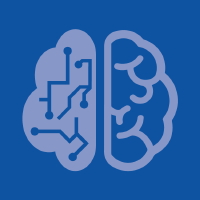Topic Menu
► Topic MenuTopic Editors



Data-Driven Group Decision-Making
Topic Information
Dear Colleagues,
With the existence of both global integration and reverse integration, as well as the rapid development of Internet technology and communication technology, the environment of governments, enterprises and other organizations is becoming more complex. Currently, there are major problems with group decision-making that require solving with the help of group wisdom. As the basic form of decision-making in social activities, group decision-making takes into account a variety of interests and overcomes the shortcomings of individual knowledge, information and ability. It has been widely used in many fields, such as emergency decision-making in major emergencies, major strategic decision-making in the government, logistics and supply chain management decision-making, etc. However, with the rapid development and deep integration of information technology, a new chapter of digital life has begun and we have been placed into the era of big data. Because of the characteristics of large volume, diversity, dynamic and low-value density of big data, dynamic and social group decision-making in a big data environment creates new challenges in the decision-making field, which are worthy of further exploration. Consistent or compromised schemes are more effective than the traditional decision-making method. Therefore, applying data-driven technology to carry out more research and innovation in group decision-making has extensive theoretical and practical significance. This Special Issue's aim is to solicit the latest research and review articles on group decision-making driven by data. We hope to combine the two studies, including new theoretical methods based on existing theories. We welcome new ideas to explore the future development direction of intelligent group decision-making. You are invited to provide original contributions of novel theories, methods and applications to the problems of data-driven group decision-making research. Potential topics:
- Application of robust optimization method in group decision-making;
- Application of data driven method in group decision-making;
- Application of machine learning method in group decision-making;
- Analysis and application of data-driven group decision-making behavior;
- Clustering method of preference data in group decision-making;
- Multistage dynamic group decision-making method;
- Data-driven preference learning method;
- Data-driven preference clustering method;
- Large-group emergency decision based on decision-maker behavior data mining;
- Data collection and extraction in online reviews;
- Data mining for feature learning, classification, regression and clustering.
Prof. Dr. Shaojian Qu
Prof. Dr. Ying Ji
Dr. M. Faisal Nadeem
Topic Editors
Keywords
- decision making
- data-driven
- optimization
- algorithm
- applications
Participating Journals
| Journal Name | Impact Factor | CiteScore | Launched Year | First Decision (median) | APC | |
|---|---|---|---|---|---|---|

Big Data and Cognitive Computing
|
3.7 | 7.1 | 2017 | 18 Days | CHF 1800 | Submit |

Digital
|
- | 3.1 | 2021 | 23.6 Days | CHF 1000 | Submit |

Information
|
2.4 | 6.9 | 2010 | 14.9 Days | CHF 1600 | Submit |

Mathematics
|
2.3 | 4.0 | 2013 | 17.1 Days | CHF 2600 | Submit |

Systems
|
2.3 | 2.8 | 2013 | 17.3 Days | CHF 2400 | Submit |

MDPI Topics is cooperating with Preprints.org and has built a direct connection between MDPI journals and Preprints.org. Authors are encouraged to enjoy the benefits by posting a preprint at Preprints.org prior to publication:
- Immediately share your ideas ahead of publication and establish your research priority;
- Protect your idea from being stolen with this time-stamped preprint article;
- Enhance the exposure and impact of your research;
- Receive feedback from your peers in advance;
- Have it indexed in Web of Science (Preprint Citation Index), Google Scholar, Crossref, SHARE, PrePubMed, Scilit and Europe PMC.

